Earlier this year, the media in Australia and around the world became captivated by a study that claimed ‘upzoning’ planning measures implemented in Auckland in 2016 had a significant impact on lowering housing costs.
The results were quickly pounced upon by the media, the property lobby, and the YIMBY movement, all of whom advocated that Australia adopt similar upzoning policies to those of Auckland.
I showed that the report was false because it used a “biased sample” to skew the results. So too did Dr Cameron Murray on his Fresh Economic Thinking website (see here and here).
The report also ignored the reality that large numbers of New Zealanders fled to other cities as a result of lockdowns caused by the Covid-19 pandemic.
With fewer people needing homes in Auckland, it’s not surprising that rents fell:
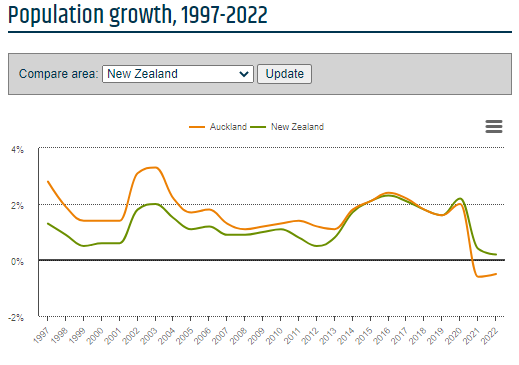
The report also ignored the cyclical nature of housing markets.
The slower growth in Auckland rents post the 2016 planning reforms also reflects swings in the housing cycle, as illustrated by Dr Cameron Murray below:
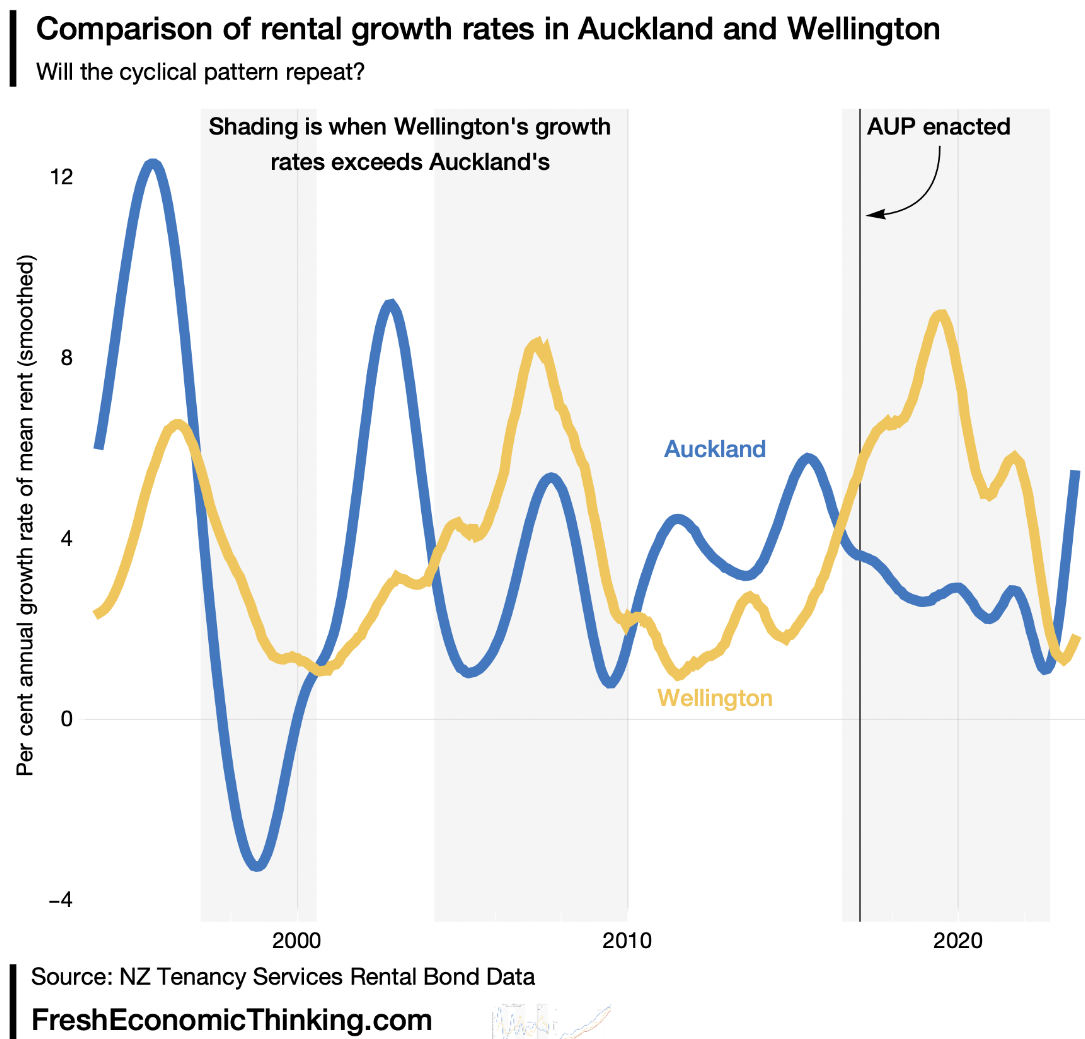
The long-term trend shows no appreciable slow down in Auckland rents versus the rest of New Zealand:
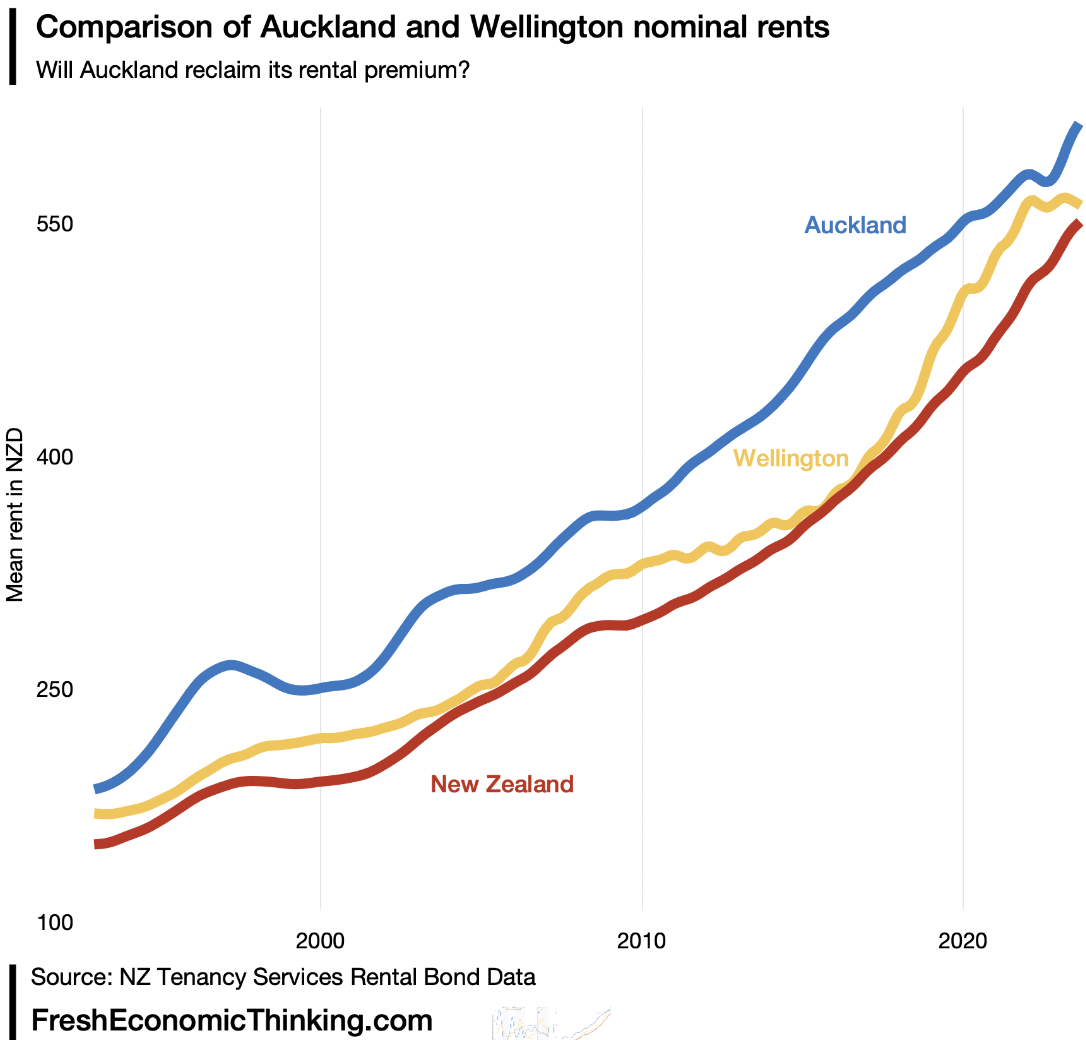
Immigration into New Zealand has now rebounded to record levels:
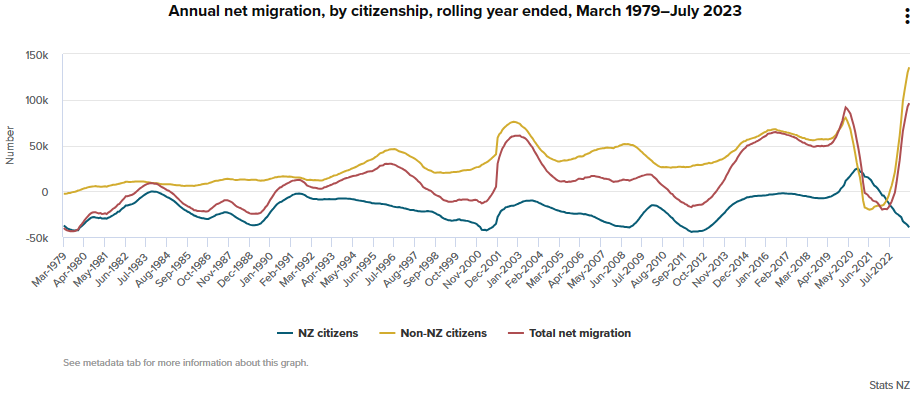
At the same time, dwelling consents in New Zealand have collapsed, as shown by Justin Fabo:
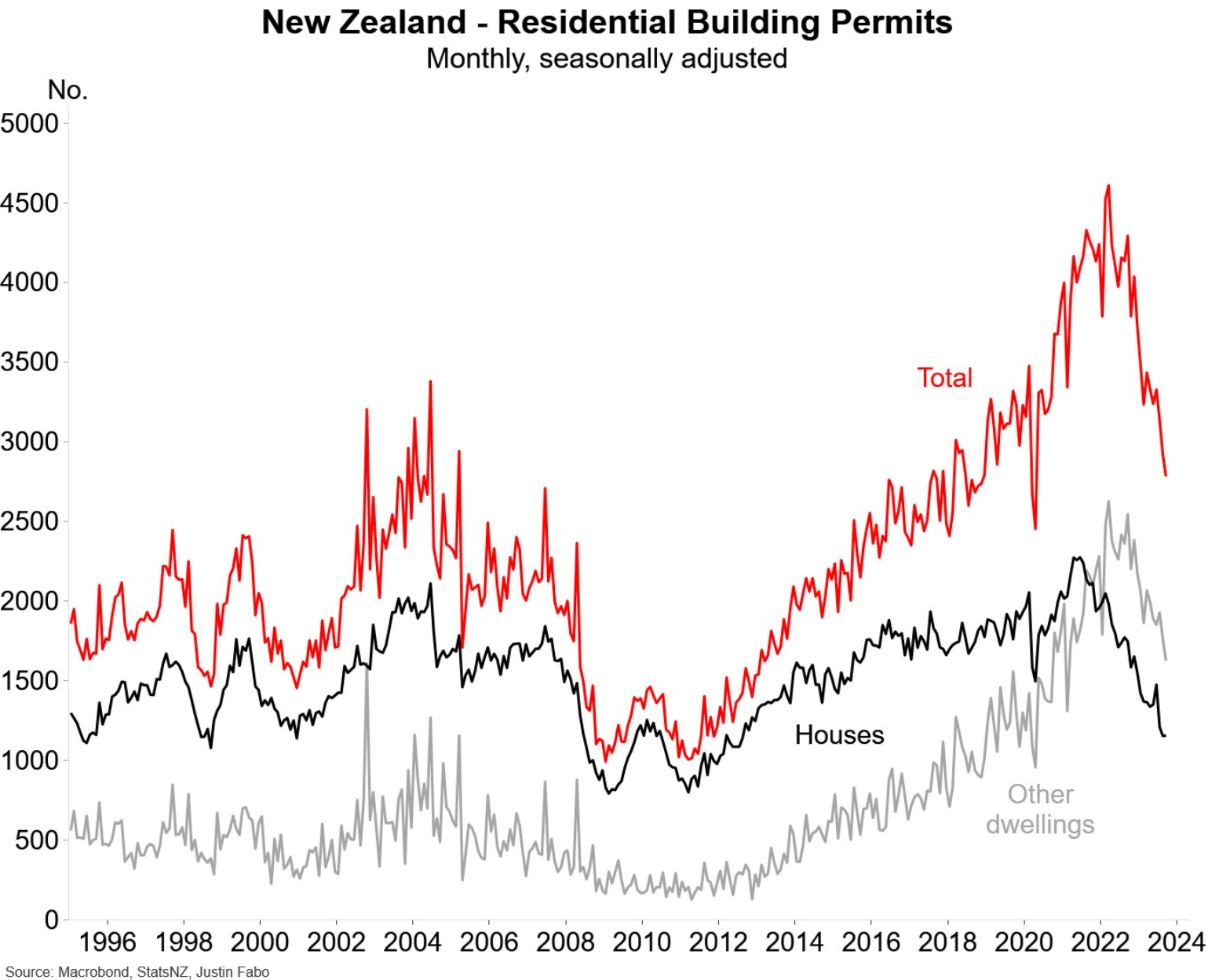
A large share of the migrants have landed in Auckland, with Interest.co.nz warning that the city faces another rental crisis:
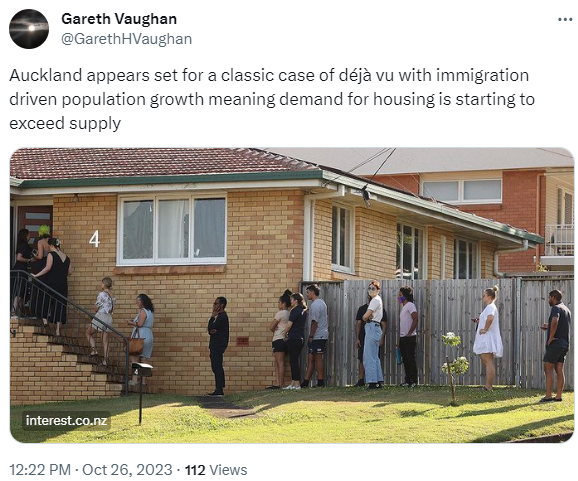
From the article:
The latest figures from Statistics NZ show Auckland’s population grew 47,000 in the 12 months to June this year, mainly driven by high levels of international immigration.
Auckland has an estimated average household occupancy of three people per dwelling, so an extra 47,000 people would, on average, require an additional 15,667 homes to house them all.
However the latest Auckland Council figures show the number of new dwellings completed in the 12 months to June this year fell just short of that at 15,263, leaving a shortfall of 404 homes for the year…
Auckland housing market is at a turning point where immigration-driven demand starts to outstrip supply, which could see a return of the housing shortages that plagued the region prior to 2020.
It could also see pressures rising on the infrastructure required for new housing such as water, sewerage and electricity supply and on other public services such as transport, health and education.
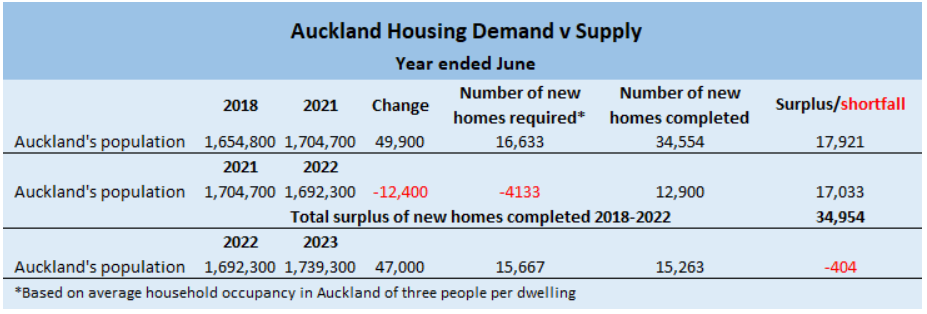
The pain is already being felt in the rental market with Statistics New Zealand posting 9.4% growth in asking rents across Auckland in the year to September, well above the 7.2% national average:
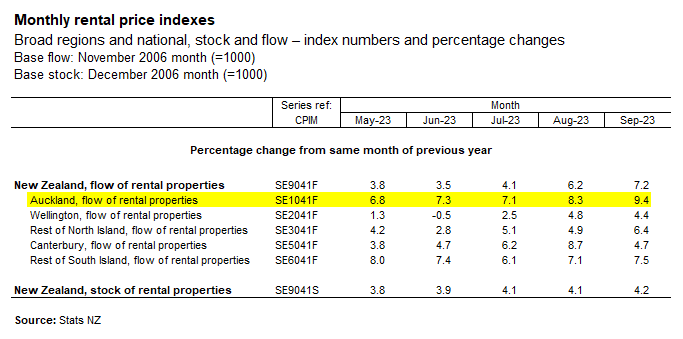
As in Australia and Canada, New Zealand’s rental crisis is being fueled by the country’s unprecedented levels of immigration, much of which is landing in Auckland.
It has once again exposed the charlatans claiming that a “lack of supply” and restrictive planning have driven the rental crisis in Australia, Canada, and New Zealand.
Extreme levels of immigration over a prolonged period of time are clearly the main contributing factor.
It’s the immigration demand, stupid!

